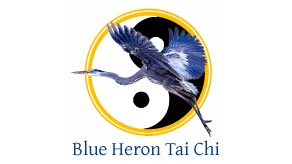Several years ago, I researched Qigong approaches to osteoporosis. Much of my focus was around Mantak Chia’s Bone Breathing exercises. Using his material as a guide, I developed a series of Qigong exercises that, over a period of eight weeks, taught people with osteopenia and osteoporosis how to increase bone density.
The popular Western medicine theory about osteoporosis is that you can only slow down the rate of decline. Some medicines help this process, and if exercise is indicated, it is usually given as – strength training – with little or no instruction.
Qigong takes another approach by infusing bones with Qi in specific ways. Once that has been achieved, then isometric exercises are initiated which put stress on the bones. This stress (remember “strength training?”) is what builds bone density. Filling the bones with Qi enhances the entire procedure. The Qigong set of exercises called “The Eight Pieces of Brocade” was developed by 12th-century Chinese general Yue Fei (1103 – 1142 CE) to keep his soldiers fit for battle. I doubt General Yue Fei had a laboratory set up to prove the effectiveness of the exercises. All he knew was that they worked.
In 1957 the piezoelectric effect was discovered. Certain crystals emit electricity when they are put under stress. One of the most common uses in everyday life is the use of a quartz crystal to ignite a BBQ or a gas stove. A hammer strikes the quartz crystal which emits a spark, which ignites the gas. The calcium in your bones and in tooth enamel is another such piezoelectric crystal. Calcium doesn’t produce as much “spark” as quartz, but the effect is measurable.

Calcium
You can create this piezoelectric effect by lifting weights, or with isometric tension by contracting the muscles around the bones. There is another option: bouncing. Specifically, shocking the entire body by bouncing on the heels. The last exercise in the “Eight Pieces of Brocade” Qigong set does exactly this.
Here is an excerpt from a paper published in 2022 by the journal Nanomaterials, called the “Application of Piezoelectric Material and Devices in Bone Regeneration.”
‘Bone is a multidirectional and anisotropic piezoelectric material that exhibits an electrical microenvironment; therefore, electrical signals play a very important role in the process of bone repair, which can effectively promote osteoblast differentiation, migration, and bone regeneration. Piezoelectric materials can generate electricity under mechanical stress without requiring an external power supply. … Harnessing the body’s kinetic energy to generate the electrical signals needed for bone growth is very promising for bone regeneration.’
In simpler terms – applying force to bones, either through isometric muscle contraction, or bouncing on your heels generates electricity through the piezoelectric effect that changes the cellular concentration of calcium in the bones and creates cell secretions that promote bone cell production.

The Royal Osteoporosis Society, headquartered in Bath, England, recently published a recommendation that people with osteoporosis should shock their system a minimum of 50 times a day to promote increased bone density. Ideally, you should generate enough of a shock when you drop onto your heels to feel it throughout your body.
I would recommend some common sense here. If you have severe osteoporosis and are in danger of fracturing bones, take it easy. Baby steps. Build up slowly. Make sure you are not going to do more damage than healing. Maybe your heel bounces are just a quarter of an inch. And give it time. Perhaps a month or more before adding another eighth of an inch. You don’t need to apply the 50 bounces all at once. You can bounce your way through your day with a few bounces here and there as you see fit.
Conclusion: A program that combines Qigong, active isometric tension, and bouncing on the heels can be an effective way to counter osteoporosis.
Sales Pitch: If you are interested in my eight-week course on Bone Breathing, please contact me. It is a combination of personal meetings (Zoom works, too) and videos. $150 for the course.
Sources:
Royal Osteoporosis Society
https://theros.org.uk/information-and-support/bone-health/exercise-for-bones/
MDPI Journal of Nanomaterials: Application of Piezoelectric Material and Devices in Bone Regeneration
https://www.mdpi.com/2079-4991/12/24/4386
Phys.Org
Using bone’s natural electricity to promote regeneration, by National Institute for Materials Science
https://phys.org/news/2020-02-bone-natural-electricity-regeneration.html
Bone Marrow Nei Kung by Mantak Chia
Destiny Books, ISBN 978-1-59477-112-5
(A word of caution: The first two chapters address improving bone density. The rest of the book turns to sexual energy massage (with graphic illustrations), and other practices that may upset delicate temperaments. This is why I only distribute handouts and don’t bandy the book about in class.)
